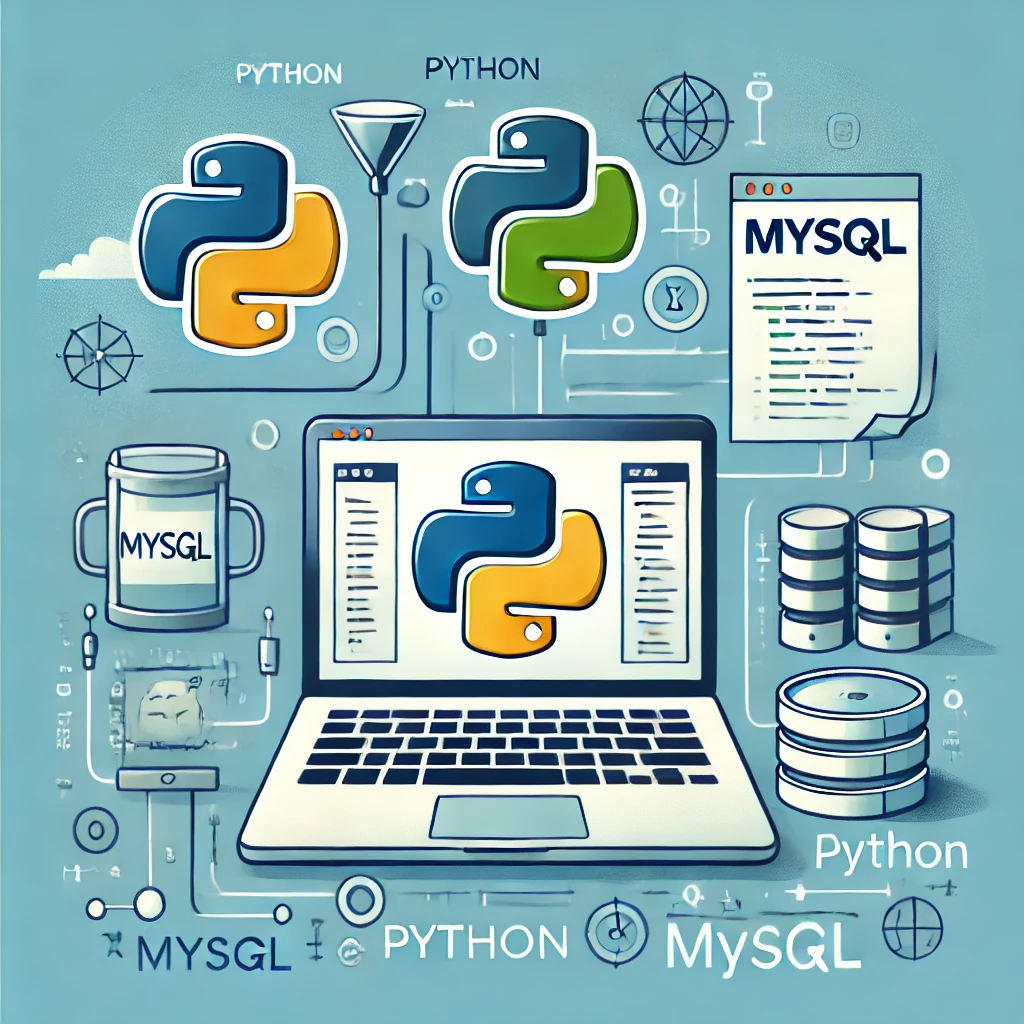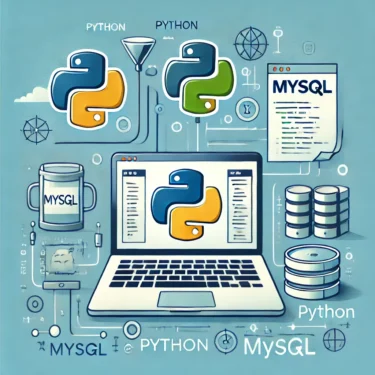1. Python and MySQL Integration: Introduction
Python is a highly flexible programming language that can interact with various Database Management Systems (DBMS). Among them, MySQL is widely used as an open-source relational database, and when combined with Python, it enables powerful data manipulation capabilities.
This article explains how to connect Python to MySQL and perform basic database operations such as inserting, retrieving, updating, and deleting data.
2. Environment Setup for Python and MySQL Integration
First, you need to prepare the environment for connecting Python with MySQL. This section describes the installation and setup of the required software.
2.1 Installing MySQL
The installation steps for MySQL vary depending on your operating system. Below are simple installation methods for each OS:
- Windows: Download the installer from the official MySQL website and follow the setup guide.
- Mac: Use Homebrew with the command
brew install mysql. - Linux: On Debian-based systems, use
sudo apt-get install mysql-server.
2.2 Setting Up the Python Environment
Next, install the required libraries in your Python environment. To connect Python with MySQL, you’ll need one of the following libraries:
- mysql-connector-python: The official MySQL connector provided by Oracle.
- PyMySQL: A pure Python library compatible with MySQLdb.
Installation is simple—just run the following command:
pip install mysql-connector-pythonOr, if you prefer to use PyMySQL, run this command:
pip install pymysql2.3 Differences Between Libraries
mysql-connector-python is the official MySQL connector with robust performance and support. On the other hand, PyMySQL is lightweight and a good choice when MySQLdb compatibility is needed. The right choice depends on your project requirements.
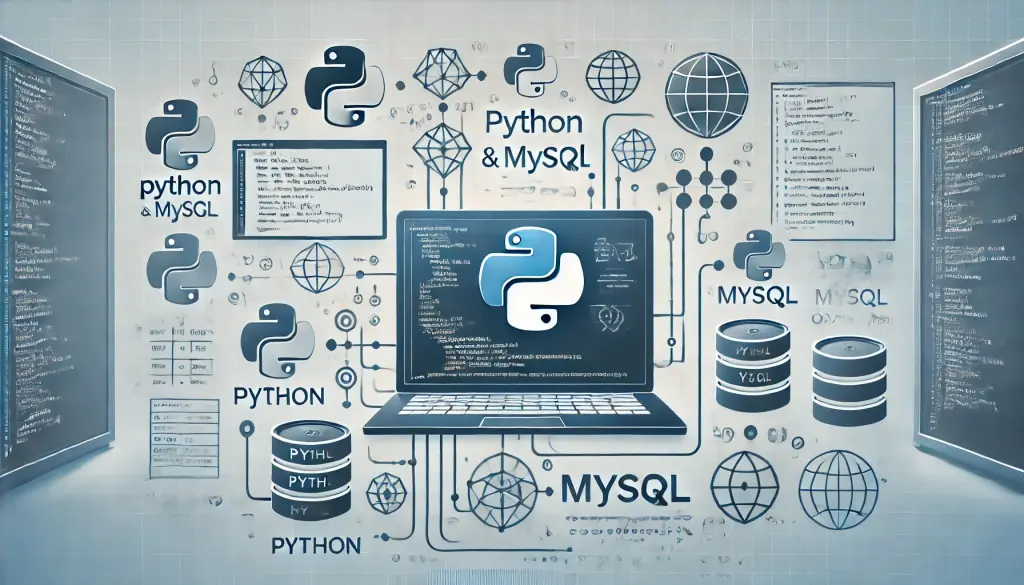
3. Basic Steps to Connect Python with MySQL
Connecting Python to MySQL is straightforward. This section explains the steps for connecting to a MySQL database and working with tables.
3.1 Connecting to a MySQL Database
Here’s a basic example using mysql-connector-python to connect to MySQL:
import mysql.connector
# MySQL connection details
conn = mysql.connector.connect(
host='localhost',
user='root',
password='password',
database='test_db'
)
# Check connection
if conn.is_connected():
print("Successfully connected to MySQL server!")This code uses the mysql.connector.connect() function to connect to a local MySQL server. If successful, a confirmation message will be displayed.
3.2 Troubleshooting Connection Issues
If the connection fails, possible errors include:
- Authentication error: The username or password may be incorrect.
- Host connection error: Check whether the server is running and verify firewall settings.
To prevent your program from crashing, handle errors with a try-except block:
try:
conn = mysql.connector.connect(...)
except mysql.connector.Error as err:
print(f"Error: {err}")4. Basic SQL Operations
Once you are connected to MySQL, the next step is to perform basic SQL operations. In this section, we’ll cover how to insert, retrieve, update, and delete data.
4.1 Inserting Data
To insert new records into a table, you can use the following SQL statement:
cursor = conn.cursor()
# Insert query
insert_query = "INSERT INTO users (username, email) VALUES (%s, %s)"
data = ("user1", "user1@example.com")
# Execute query
cursor.execute(insert_query, data)
# Commit changes
conn.commit()4.2 Retrieving Data
To retrieve data, use a SELECT statement. Here’s an example that fetches all user records:
cursor.execute("SELECT * FROM users")
rows = cursor.fetchall()
# Display results
for row in rows:
print(row)4.3 Updating Data
To update existing records, use the UPDATE statement:
update_query = "UPDATE users SET email = %s WHERE username = %s"
cursor.execute(update_query, ("new_email@example.com", "user1"))
conn.commit()4.4 Deleting Data
To remove unnecessary records, use the DELETE statement:
delete_query = "DELETE FROM users WHERE username = %s"
cursor.execute(delete_query, ("user1",))
conn.commit()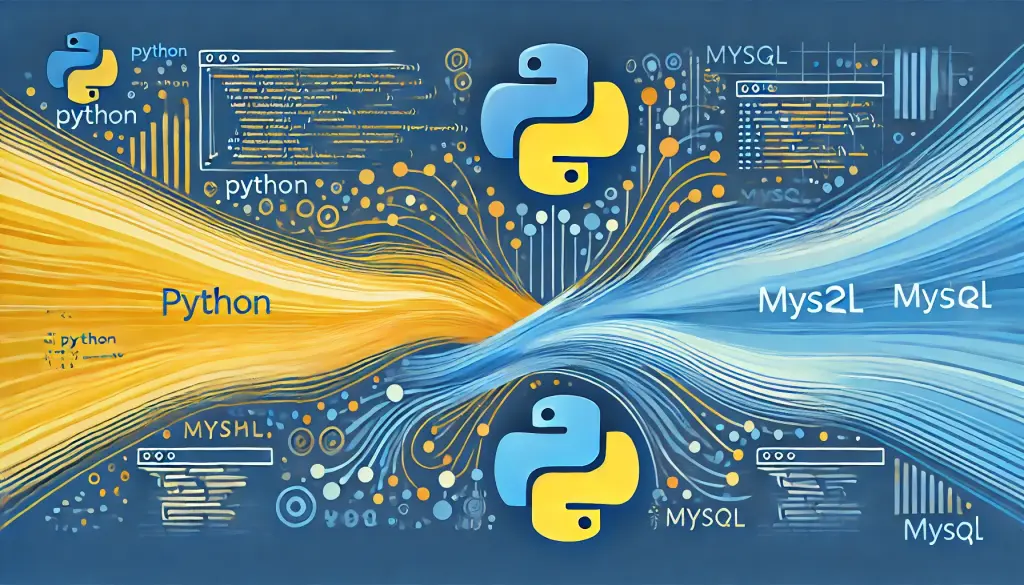
5. Advanced Operations
Next, let’s look at more advanced operations such as transaction management and prepared statements.
5.1 Transaction Management
When executing multiple database operations as a group, and rolling back if necessary, transactions are used:
try:
cursor.execute("...")
conn.commit() # Commit if successful
except:
conn.rollback() # Roll back if an error occurs5.2 Using Prepared Statements
To prevent SQL injection, it’s recommended to use prepared statements:
stmt = "SELECT * FROM users WHERE username = %s"
cursor.execute(stmt, ("user1",))6. Practical Examples of Python and MySQL
Combining Python with MySQL allows you to develop a wide range of practical applications. In this section, we’ll explore some real-world use cases.
6.1 Building a User Management System
A user management system is a common example of using Python and MySQL together. Below is a simple design:
Step 1: Create a User Table
First, create a table to store user information using the CREATE TABLE statement:
CREATE TABLE users (
id INT AUTO_INCREMENT PRIMARY KEY,
username VARCHAR(50) NOT NULL,
email VARCHAR(100) NOT NULL,
password VARCHAR(255) NOT NULL
);Step 2: Registering New Users
Next, implement a function to register new users. Here’s a Python example using the INSERT statement:
import mysql.connector
# Connect to MySQL
conn = mysql.connector.connect(user='root', password='password', host='localhost', database='test_db')
cursor = conn.cursor()
# Insert a new user
insert_query = "INSERT INTO users (username, email, password) VALUES (%s, %s, %s)"
user_data = ("user123", "user123@example.com", "securepassword")
cursor.execute(insert_query, user_data)
# Commit changes
conn.commit()
# Close connection
cursor.close()
conn.close()Step 3: Implementing a Login Function
Add a login feature to authenticate users. Here’s an example using a SELECT statement:
# Login authentication
login_query = "SELECT * FROM users WHERE username = %s AND password = %s"
login_data = ("user123", "securepassword")
cursor.execute(login_query, login_data)
user = cursor.fetchone()
if user:
print("Login successful")
else:
print("Login failed")6.2 Using MySQL for Data Analysis
By using MySQL as a data storage system and combining it with Python’s data analysis libraries, you can perform powerful analytics. Here’s an example using Pandas:
Step 1: Fetch Data from MySQL
Retrieve data stored in MySQL and load it into a Pandas DataFrame:
import mysql.connector
import pandas as pd
# Connect to MySQL
conn = mysql.connector.connect(user='root', password='password', host='localhost', database='test_db')
cursor = conn.cursor()
# Fetch data into a Pandas DataFrame
query = "SELECT * FROM users"
cursor.execute(query)
rows = cursor.fetchall()
df = pd.DataFrame(rows, columns=['id', 'username', 'email', 'password'])
# Preview data
print(df.head())
# Close connection
cursor.close()
conn.close()Step 2: Aggregate and Analyze Data
Use Pandas to perform aggregation and analysis. For example, you can count users by email domain:
# Count users by email domain
df['domain'] = df['email'].apply(lambda x: x.split('@')[1])
domain_count = df['domain'].value_counts()
print(domain_count)This way, you can use MySQL as the backend and leverage Pandas and other Python tools for effective data analysis.
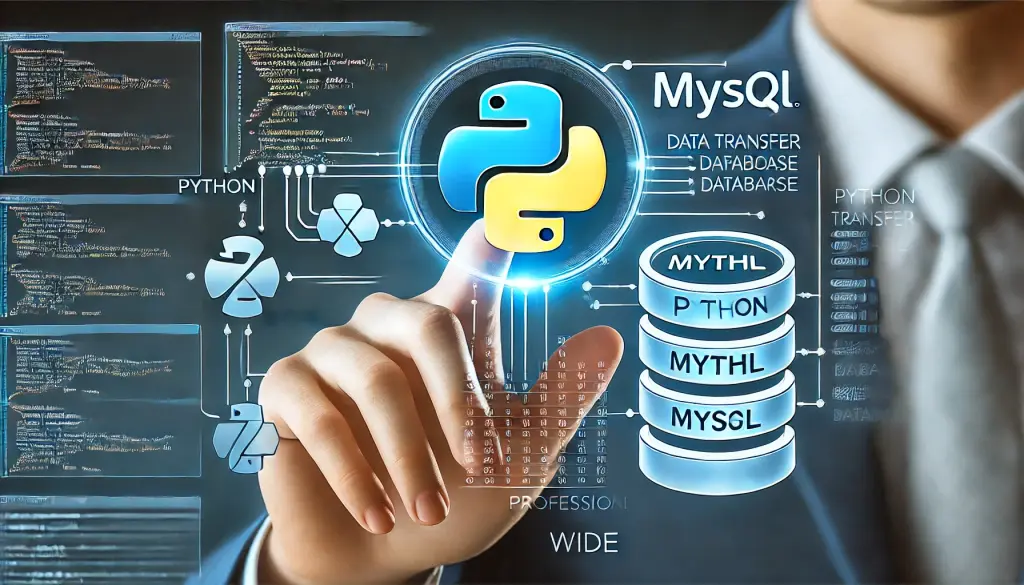
7. Summary and Next Steps
In this guide, we covered the basics of working with MySQL using Python—from fundamental database operations to building a simple user management system and even performing data analysis. This skillset is extremely powerful for building web applications and data-driven systems.
7.1 Further Learning
After mastering the basics explained in this article, consider moving on to the following steps:
- Integrating with Django or Flask: Build more advanced web applications with Python frameworks.
- Database Optimization: Learn about MySQL indexing and query optimization to improve performance.
- Big Data Analysis: Process data from MySQL in Python for machine learning models and large-scale analytics.
